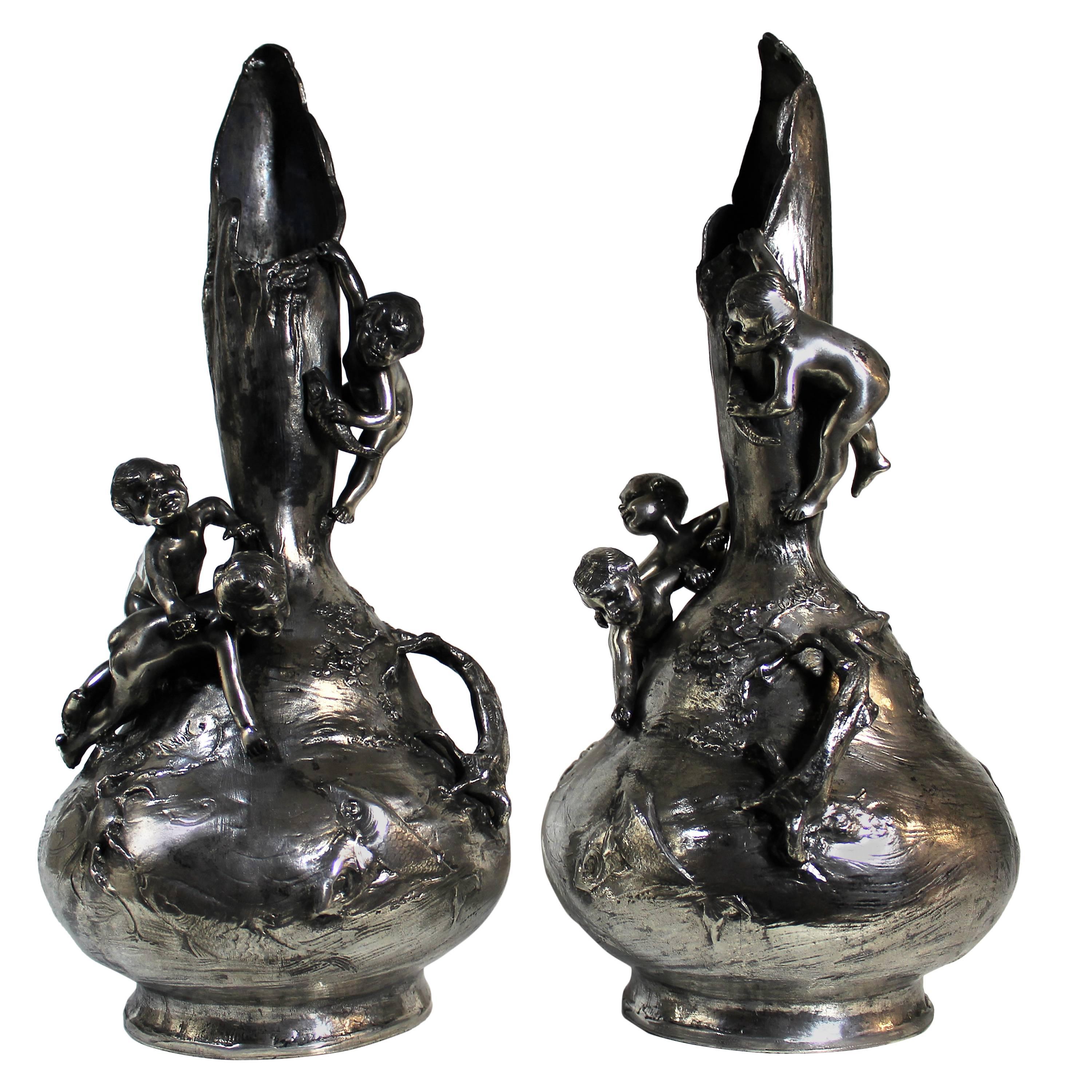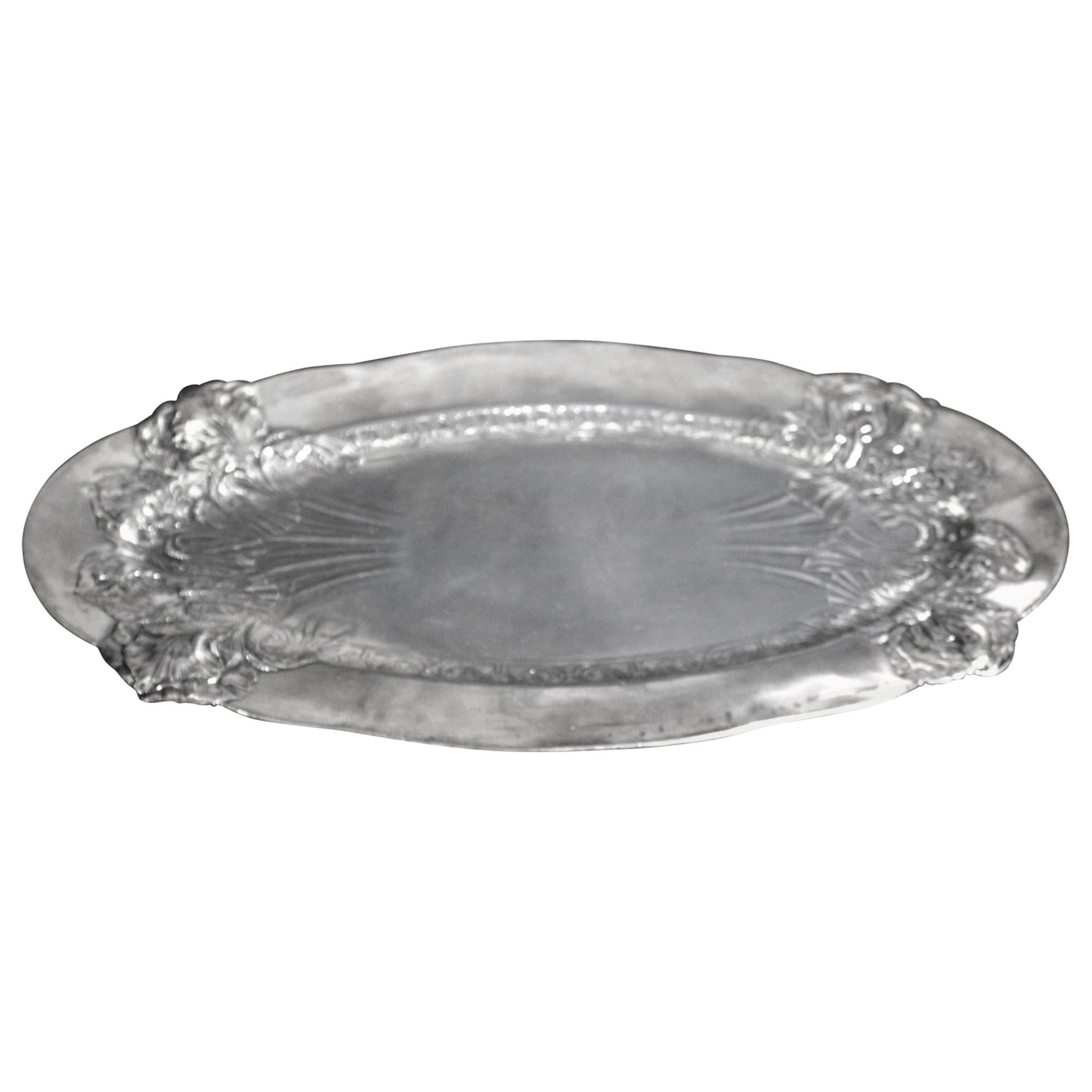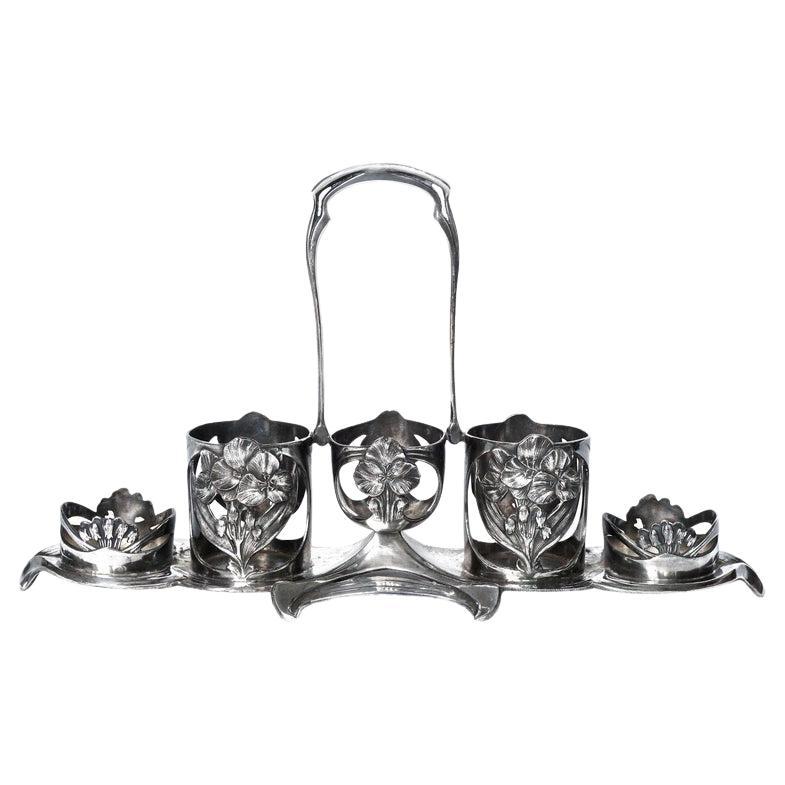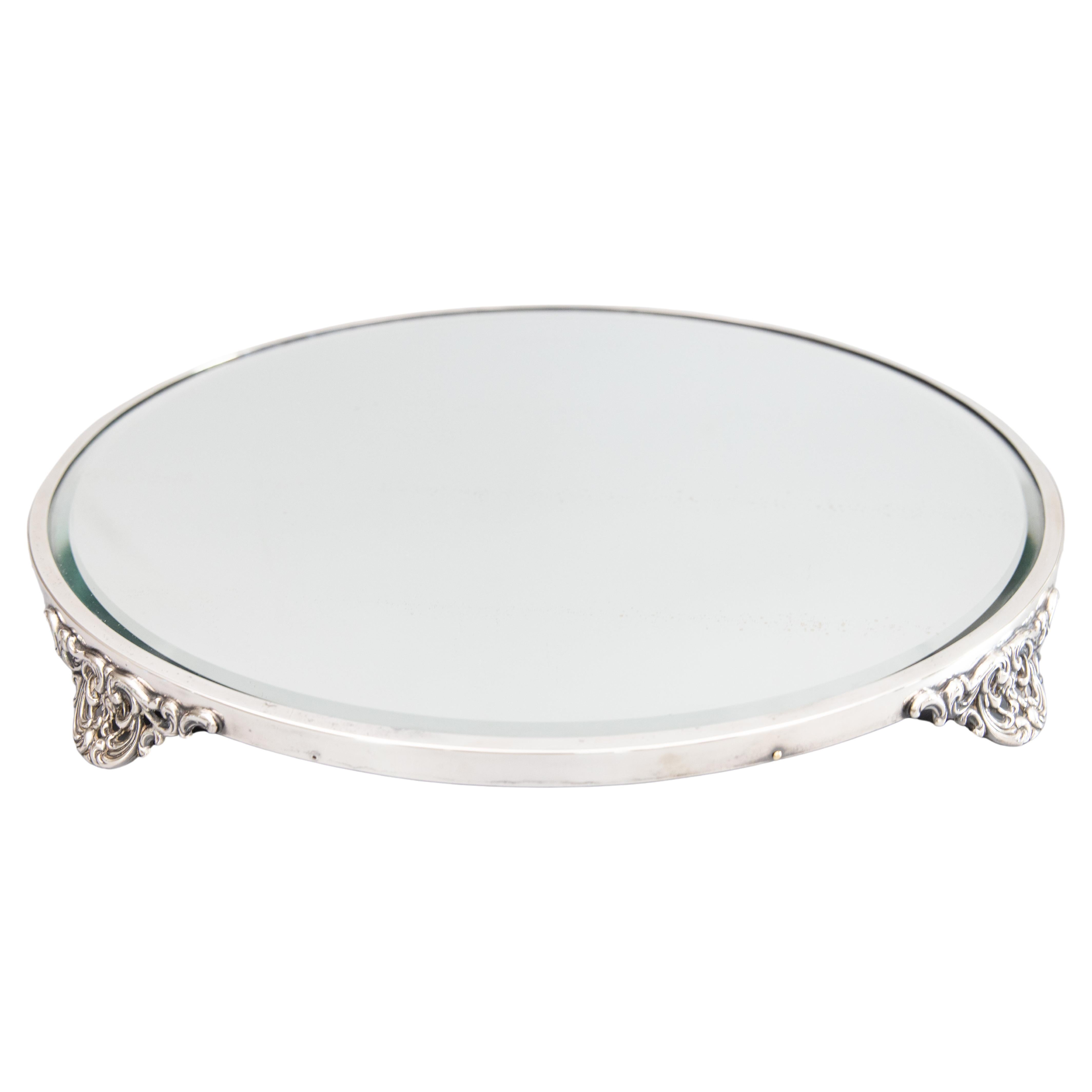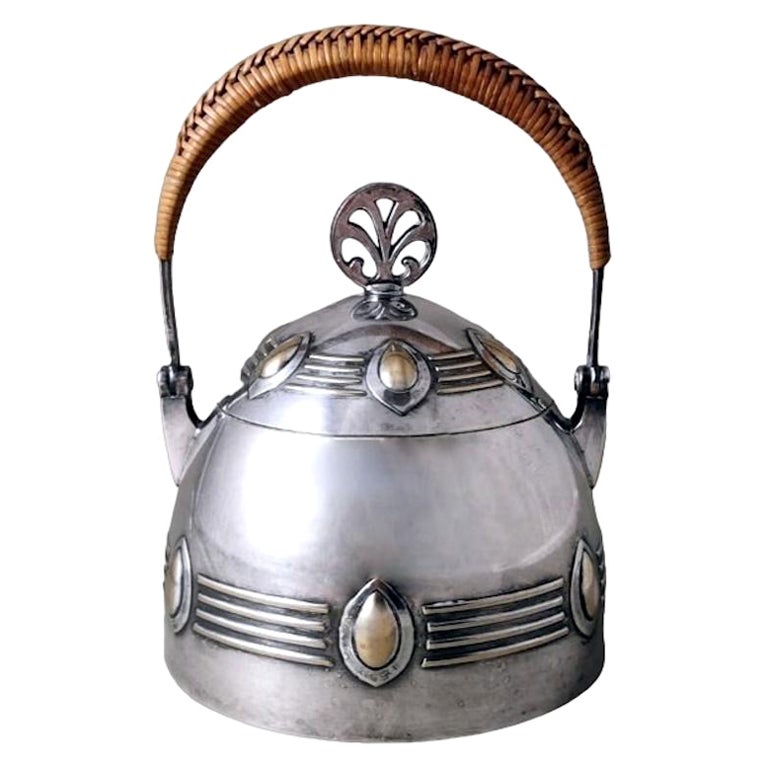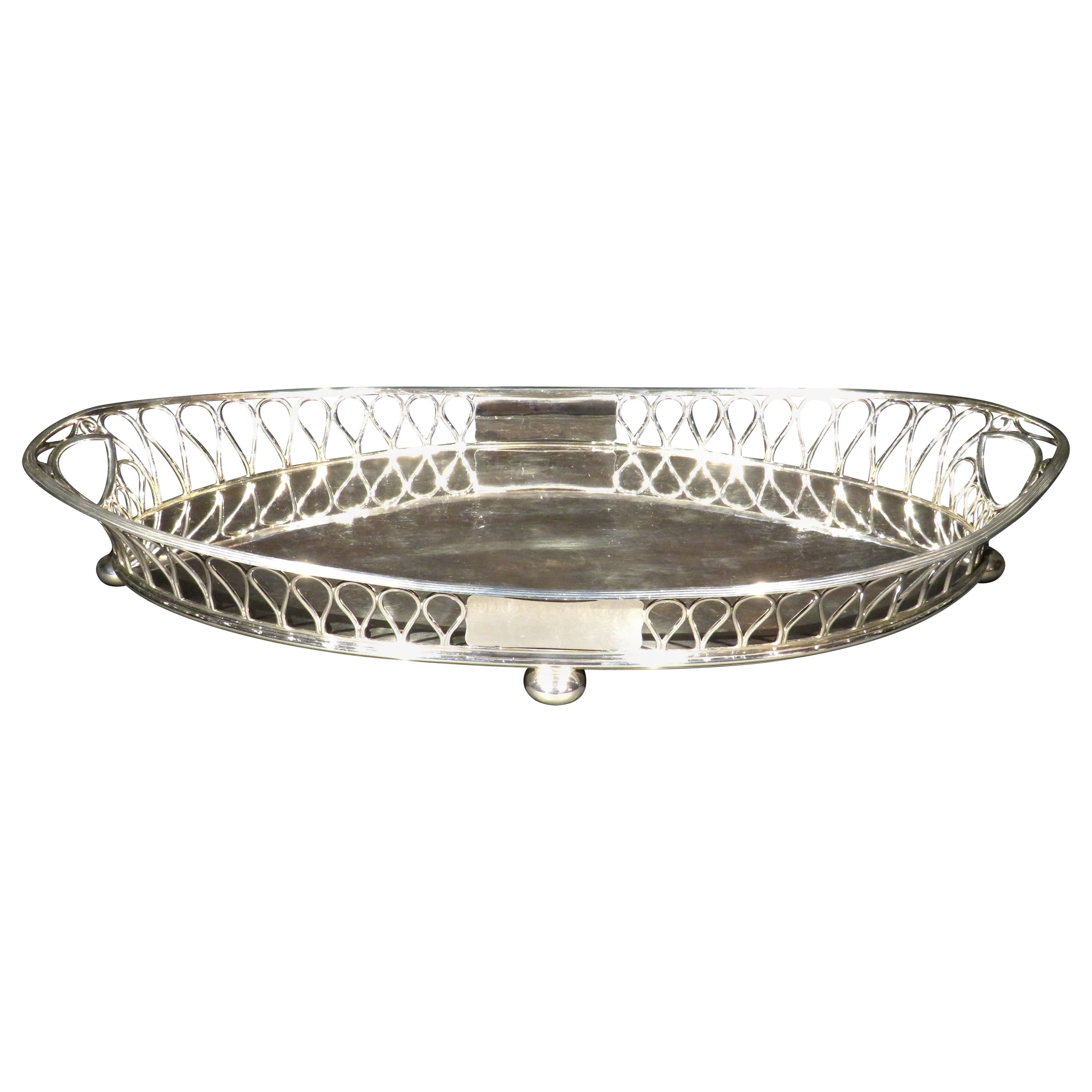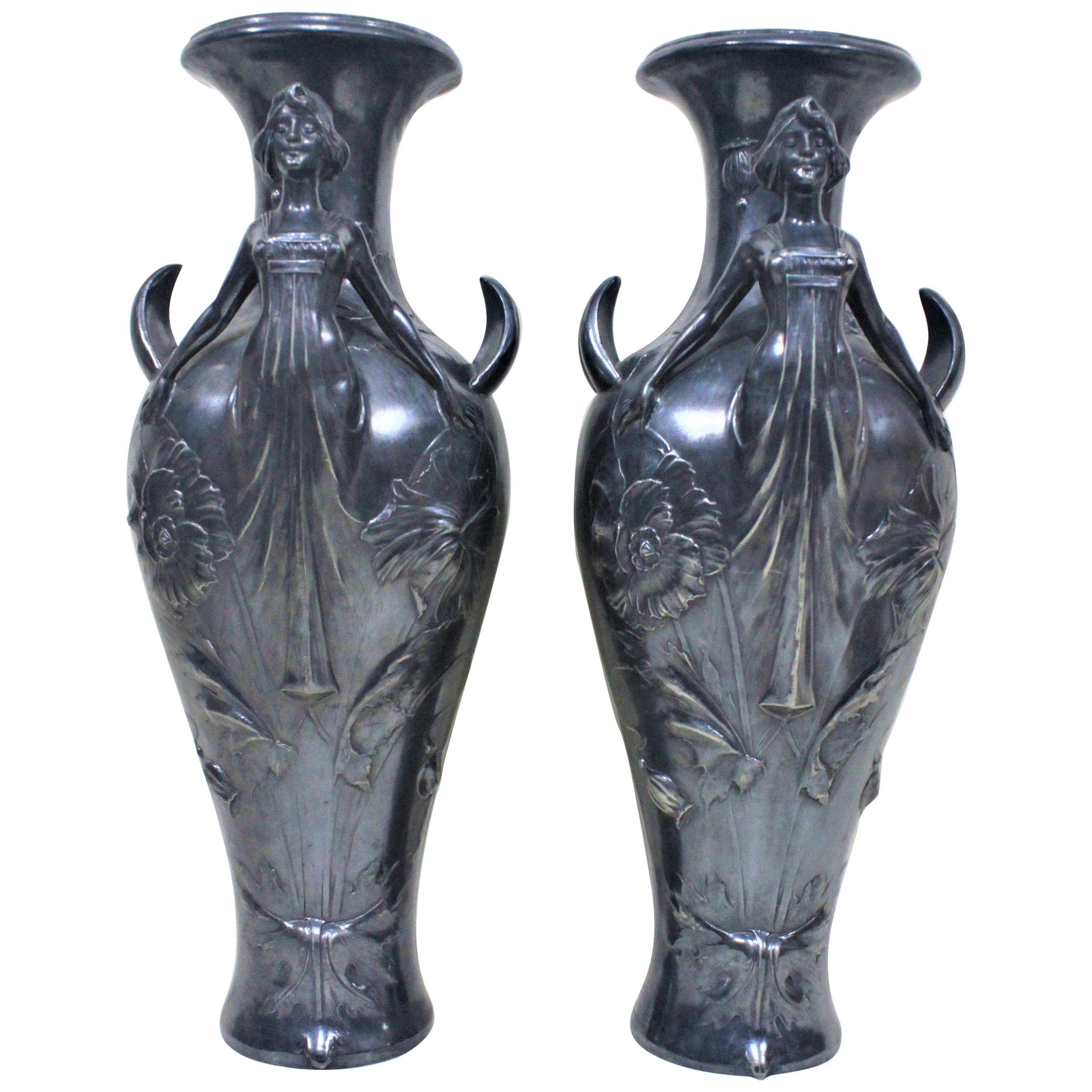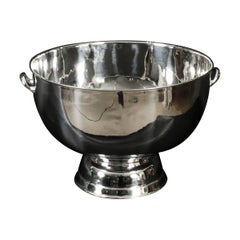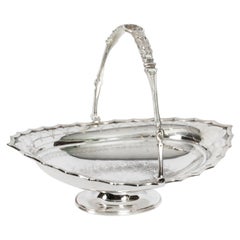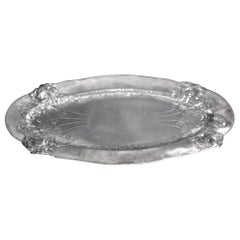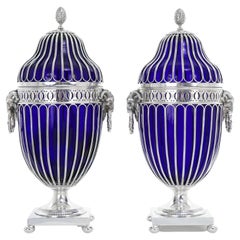
Antique Silver Plated Beer Stein Art Nouveau, 1920s
View Similar Items
Video Loading
Want more images or videos?
Request additional images or videos from the seller
1 of 22
Antique Silver Plated Beer Stein Art Nouveau, 1920s
About the Item
- Dimensions:Height: 16.93 in (43 cm)Width: 8.67 in (22 cm)Depth: 7.09 in (18 cm)
- Style:Art Nouveau (In the Style Of)
- Materials and Techniques:
- Period:
- Date of Manufacture:circa 1920
- Condition:
- Seller Location:London, GB
- Reference Number:Seller: 001031stDibs: LU950623530002
About the Seller
5.0
Platinum Seller
These expertly vetted sellers are 1stDibs' most experienced sellers and are rated highest by our customers.
Established in 1983
1stDibs seller since 2012
1,196 sales on 1stDibs
Typical response time: 1 hour
Associations
LAPADA - The Association of Arts & Antiques Dealers
More From This SellerView All
- Antique WMF Silver Plated Sweets / Visiting Card / Key/ Tray Early 20th CenturyLocated in London, GBThis is a beautiful WMF Art Nouveau silver plated visiting card tray Circa 1900 in date. Depicting a female figure in a long, flowing diaphanous dress, the train forming the double sided tray, with the impressed maker's mark and stamped '169' to underside. This exquisite casket could house anything from trinkets, keys, sweets to jewellery. Whatever you choose to use this item for you are sure to do it in style. Condition: In excellent condition with no dings, dents or signs of repair. Please see photos for confirmation. Dimensions in cm: Height 22 x Width 34.5 x Depth 16.5 Dimensions in inches: Height 9 inches x Width 1 foot, 2 inches x Depth 6 inches WMF In 1853, Daniel Straub, a miller from Geislingen, joined forces with the Schweizer Brothers to form the "Metallwarenfabrik Straub & Schweizer" in Geislingen. This was the second company to be founded by Straub - previously in 1850, from the nucleus of a small repair workshop, which he had set up to work on the construction of Geislingen's famous railway incline, he had founded Maschinenfabrik Geislingen. This company was involved mainly in manufacturing mill turbines and traded throughout Europe. As early as 1862, the young company distinguished itself by winning a gold medal at the World Exhibition in London. In 1866, following the departure of the brothers Louis and Friedrich Schweizer, the company was renamed Straub & Sohn" (Straub & Son). The company showroom, built in 1868 in Berlin, gradually evolved to become the company's first retail outlet. Three years later, the company was already employing 60 workers. By 1880, the number of employees had grown to approximately 200 and the company was already producing 960 different items. 1880 saw the merger between Straub & Sohn and "Ritter & Co.", Esslingen, to form a public limited company under the name of Wurttembergische Metallwarenfabrik. At the time of the merger, Ritter & Co.'s Esslingen factory was already using the electroplating method of silver plating and had the more modern production facilities at its disposal. Straub's company, on the other hand, was the more profitable of the two. 1892 saw the development of a special technique for silver plating cutlery, whereby the silver is distributed in a way that, at the points of the cutlery most exposed to wear and tear, the coating is twice as thick as elsewhere. This process was patented and is still in use today. Known nowadays as 'Perfect Hard Silver plating' the technique remains exclusive to WMF. Under Carl Hugele the company gained international standing. At the turn of the century the factory in Geislingen employed 3,000 workers. By 1910, this number had already grown to 4,000, making WMF the largest company in Wurttemberg at this time. Sales catalogues were printed in twelve languages. Subsidiary companies in London, Warsaw and Vienna opened up export markets. Under the direction of Albert Mayer the WMF studio was influenced by the art nouveau style. The product range was modernized and considerably extended. In 1905 WMF acquired a majority holding of the Cologne company Orivit AG, which manufactured products from "Orivit", a tin alloy. As of 1925, products created by the Contemporary Decorative Products Department (NKA) made their debut on the market. This department was set up under the direction of Hugo Debach in order to establish the name of WMF amongst consumers interested in art and design. This department was responsible for producing the special "Ikora" finish, which has earned an important place in the annals of art history. The "Ikora" brand name referred to a specific method of treating the surface of the metal, by which layers of coating were applied in a partly chemical and partly heat induced process. A host of newly developed hand-finishing techniques enhanced the possibilities for adding decorative flourishes to the products. Despite being mass produced, every item looked as if it had been individually crafted. At the end of the war the company had lost its foreign assets, associated factories...Category
Antique Early 1900s German Art Nouveau Sheffield and Silverplate
MaterialsSilver Plate
- Antique Huge Art 18" Deco Silver Plated Champagne / Wine Cooler 19th CenturyBy Mappin & WebbLocated in London, GBThis is a elegant large banquet sized antique English Art Deco silver plate on copper wine / champagne cooler bearing the makers mark of the world renowned retailer and silversmith...Category
Antique Early 1900s English Art Deco Sheffield and Silverplate
MaterialsSilver, Silver Plate
- Antique Victorian Silver Plated Fruit Basket 19th CenturyLocated in London, GBThis is a stunning antique Victorian silver plated fruit basket, circa 1860 in date. The oval shaped body features fabulous engrave ...Category
Antique 1860s English Victorian Sheffield and Silverplate
MaterialsSilver Plate
- Antique English Victorian Silver Plated Salver 19th CenturyBy William Hutton & SonsLocated in London, GBThis is a wonderful antique silver plated Victorian salver bearing the makers mark of William Hutton & Sons, and dating from Circa 1860. It has beautiful engraved floral and foliate decoration in the Neo-classical style and is raised on elegant scrolled feet. This salver is of fabulous quality and will add an Imperial look to your surroundings. Condition: In excellent condition with no dings, dents or signs of repair. Please see photos for confirmation. Dimensions in cm: Height 4 x Width 32 x Depth 32 Dimensions in inches: Height 2 inches x Width 1 foot, 1 inch x Depth 1 foot, 1 inch William Hutton & Sons - the firm was established in Birmingham by William Hutton in 1800 and transferred in Sheffield in 1832 where the firm was active as manufacturing silversmiths and platers at 27 High Street (140-146 West Street from 1886). After his death the business was continued under the same style by the founder's son William Carr Hutton until 1864, when the name was changed to William Hutton & Son. This was a partnership of William Carr Hutton and his youngest son Herbert Hutton (senior, born 1843).William Carr Hutton died in 1865 and c. 1870 Herbert Hutton Sr. was joined by his brothers James Edward Hutton (b. 1839) and Robert (b. 1840) and the name was changed to William Hutton & Sons. A London showroom was opened in 1863 (13 Thavies Inn Holborn until 1891, and later 7 Farrington Road until 1918).In 1893 the firm acquired Rupert Favell & Co (manufacturer silversmith at Bucknall Street, Oxford Street, London) and in the same year became William Hutton & Sons Ltd.The firm acquired Creswick & Co in 1902, beginning to use their crossed arrows marks.The last Hutton family MD was Herbert Hutton Jr. before the company failed in 1930. That was due to lack of foresight by the Chairman of the Board...Category
Antique 1860s English Victorian Sheffield and Silverplate
MaterialsSilver Plate
- Antique Victorian Silver Plated Biscuit Box, 19th CenturyLocated in London, GBThis is a highly decorative antique Victorian silver plated folding biscuit box, circa 1880 in date. It has a beau...Category
Antique 1880s English Victorian Sheffield and Silverplate
MaterialsSilver Plate
- Antique Victorian Silver Plated Triple Decanter Tantalus Stand 19th CLocated in London, GBThis is a lovely attractive antique Victorian silver plated tantalus with three cut glass decanters and stoppers, circa 1860 in date. The three cut glass decanters are of unusual in shape and feature superb facet cut linear decoration with facet cut stoppers. The silver plated decanter holder has a central stem with a loop handle and the three decanters sit in circular wells. It is raised on three pierced scrolled supports and has exquisite engraved decoration in the manner of Elkington. The craftsmanship is second to none and this beautiful tantalus is sure to add an elegant touch to your next dining experience. Condition: In excellent condition, please see photos for confirmation of condition. Dimensions in cm: Height 41 x width 27 x depth 27 Dimensions in inches: Height 1 foot, 4 inches x width 11 inches x depth 11 inches Tantalus is a type of liquor decanter in which the bottle stoppers are locked down tightly by a metal bar. This was to prevent the theft of the contents by servants. Like the name suggests, the decanters themselves are visible, drawing temptation while unattainable. A key is required for entry. The most common types of tantalus holds three bottles or decanters while there are also smaller types housing only two. There are many different forms of tantalus. Often the encasement has metal handles on both sides and ornately carved decor. Crystal and metal versions are also a beautiful option when choosing a tantalus. Tantalus derived its name from the story of the mythological Greek king...Category
Antique 1860s English Victorian Sheffield and Silverplate
MaterialsSilver Plate
You May Also Like
- Art Nouveau Silver Plated VasesLocated in Hamilton, OntarioCategory
Antique 19th Century Art Nouveau Vases
$1,195 Sale Price / set20% Off - Antique Art Nouveau Silver Plated Oval Serving Tray with Raised Floral MotifLocated in Hamilton, OntarioThis antique silver plated oval serving tray is completely unsigned, but believed to have been made in England in circa 1920 in the Art Nouveau style. The tray has an elongated oval ...Category
Mid-20th Century English Art Nouveau Sheffield and Silverplate
MaterialsCopper
- Pair of English Silver-Plate Chestnut Urns, C 1920sLocated in Litchfield, CTCirca 1920s. Silver-plate, Birmingham, England. Marked for Barker and Ellis. This rare large pair of decorative silver plate and cobalt glass-lined chestnut urns are in excellent con...Category
Vintage 1920s British Urns
MaterialsSilver Plate
$12,500 / set - Art Nouveau Silver-Plated Three Tier Cake StandLocated in Montreal, QCThis an outstanding example. It is unusually tall and of distinctly Art Nouveau style with curling tendril-like supports. The ring-form plate supports are in graduated sizes. I assoc...Category
Antique 1890s English Art Nouveau Sheffield and Silverplate
MaterialsSilver Plate
- Antique French Art Nouveau Christofle Gallia Silver Plated Condiment HolderLocated in London, GBChristofle French Art Nouveau silver plated serving condiment holder, stamped Orfèvrerie Gallia (Gallia silversmith foundry). The holder has a lovely floral design to the back and front. Measuring length 41.5cm / 16.34 inches, width 9.1cm / 3.58 inches, and height 18.5cm / 7.28 inches. The holder has some age related patina, and we have given it just a light clean. This is a beautiful and stylish antique condiment...Category
Early 20th Century French Sheffield and Silverplate
MaterialsSilver Plate
- WMF Art Nouveau PlateBy WMF Württembergische MetallwarenfabrikLocated in Vienna, ATWMF Art Nouveau plate silver plated brass Germany about 1900-1910Category
Antique Early 1900s German Art Nouveau Platters and Serveware
MaterialsSilver Plate, Brass
Recently Viewed
View AllMore Ways To Browse
Sheffield Grape
Antique Silver Stein
Antique Beer Glass
Beer Steins
Beer Stein
Large Beer Steins
Art Deco Silver Plate Tray
Antique Silver Plated Tray With Handles
Old Sheffield Plater
Antique Sheffield Silver Plate Tray
Silverplate Sugar
Old Sheffield Plate
1880 Sheffield Plate
Roll Top Glass
Old Sheffield Plate Silver
Antique Silver Plated Serving Trays
Silver Hot Plate
Antique Silver Plated Jugs
